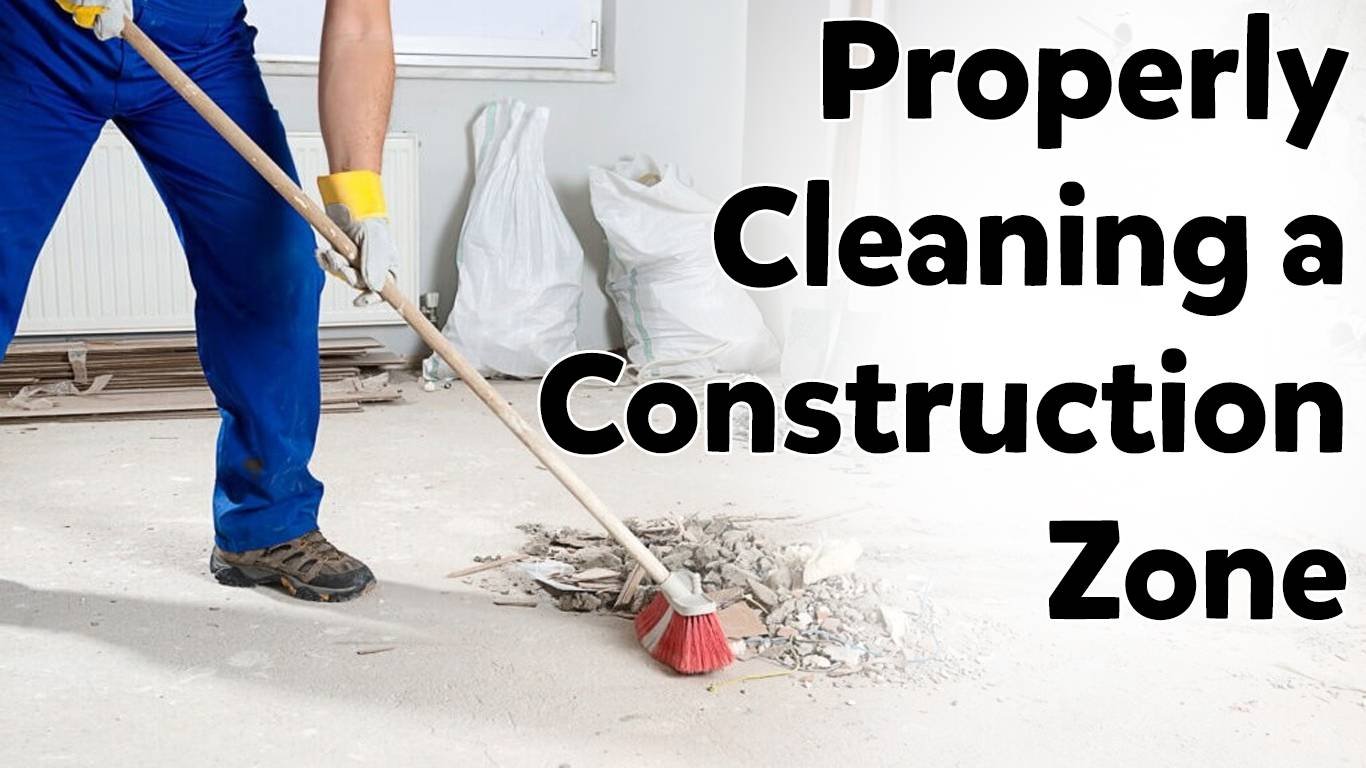Step-by-Step Checklist to Properly Cleaning a Construction Zone
Construction zones can quickly become messy and chaotic, with debris, equipment, and materials scattered around. Properly cleaning a construction zone is crucial for maintaining safety, efficiency, and a professional image. In this step-by-step checklist, we will guide you through the process of cleaning a construction zone effectively. By following these guidelines, you can ensure a clean and organized environment for construction projects.
Table of Contents
- Introduction: Importance of Cleaning a Construction Zone
- Preparing for Cleaning
- Clearing Debris and Hazardous Materials
- Organizing Tools and Equipment
- Sweeping and Clearing the Area
- Removing Stains and Residues
- Cleaning Surfaces and Structures
- Proper Waste Disposal
- Final Inspection and Quality Check
- Conclusion
- FAQs
1. Introduction: Importance of Cleaning a Construction Zone
Maintaining a clean construction zone is essential for several reasons. Firstly, it ensures the safety of workers and visitors by eliminating potential hazards and reducing the risk of accidents. Secondly, a clean and organized construction site promotes efficiency and productivity. Workers can easily locate tools and equipment, reducing downtime and delays. Additionally, a clean construction zone enhances the professional image of the project, leaving a positive impression on clients and stakeholders.
2. Preparing for Cleaning
Before initiating the cleaning process, gather the necessary cleaning supplies and personal protective equipment (PPE) such as gloves, safety goggles, and masks. Assess the construction zone for any immediate dangers or hazardous materials that require specialized handling. Ensure that all workers are aware of the cleaning plan and the importance of maintaining a clean environment.
3. Clearing Debris and Hazardous Materials
Start by removing any loose debris, such as wood scraps, nails, and packaging materials. Use appropriate containers or trash bags to collect and dispose of the waste properly. Pay special attention to hazardous materials like chemicals or asbestos, which should be handled following specific safety guidelines and regulations.
4. Organizing Tools and Equipment
A well-organized construction zone improves workflow and minimizes the risk of accidents. Return tools and equipment to their designated storage areas or toolboxes. Inspect and repair any damaged tools before storing them. Implement a labeling system to facilitate easy identification and retrieval of tools.
5. Sweeping and Clearing the Area
Thoroughly sweep the construction zone using brooms or industrial-grade sweepers. Pay attention to corners, crevices, and hard-to-reach areas. Consider using vacuum cleaners for efficient removal of dust and small debris. Clear any obstructions that may impede movement or pose safety risks.
6. Removing Stains and Residues
Construction activities often leave behind stubborn stains, adhesives, or residues on surfaces. Identify the appropriate cleaning agents and methods for different types of stains and materials. Use eco-friendly cleaners whenever possible to minimize environmental impact. Follow manufacturer instructions and safety guidelines while using cleaning chemicals.
7. Cleaning Surfaces and Structures
Clean and sanitize surfaces, walls, and structures within the construction zone. Pay attention to high-touch areas, such as doorknobs, handrails, and switches. Utilize appropriate cleaning tools, such as brushes, microfiber cloths, and mops, depending on the surface type. Ensure proper ventilation during the cleaning process.
8. Proper Waste Disposal
Dispose of waste and debris responsibly and in compliance with local regulations. Separate recyclable materials from general waste. Utilize designated waste disposal containers or coordinate with waste management services to ensure proper handling and disposal of construction waste.
9. Final Inspection and Quality Check
Conduct a thorough inspection of the cleaned construction zone to ensure all tasks are completed to the required standards. Check for any overlooked areas, stains, or debris. Address any remaining issues promptly. Involve project supervisors or managers in the final quality check to ensure compliance with cleanliness standards.
10. Conclusion
Properly cleaning a construction zone is an integral part of maintaining safety, efficiency, and professionalism in construction projects. By following this step-by-step checklist, you can effectively clean and organize a construction zone, promoting a secure and productive work environment. Remember, a clean construction zone reflects positively on the project and contributes to overall success.
FAQs
Q1. How often should a construction zone be cleaned? A: The frequency of cleaning depends on the scale and duration of the project. However, it is recommended to clean the construction zone daily or as needed to maintain cleanliness and safety.
Q2. Can I use regular cleaning products for removing construction stains? A: Some construction stains may require specialized cleaning products. It is best to identify the type of stain and consult the manufacturer’s instructions or seek professional advice for effective cleaning methods.
Q3. What should I do with hazardous materials found in the construction zone? A: Hazardous materials should be handled with care and in compliance with safety regulations. Contact local authorities or specialized waste management services for proper disposal procedures.
Q4. Who is responsible for cleaning a construction zone? A: The responsibility for cleaning a construction zone typically falls on the project manager or site supervisor. However, all workers should actively contribute to maintaining cleanliness and organization.
Q5. How can a clean construction zone benefit the project? A: A clean construction zone improves safety, productivity, and the overall image of the project. It reduces the risk of accidents, minimizes downtime, and leaves a positive impression on clients and stakeholders.
Join Telegram Civil Work Channel Click Here
